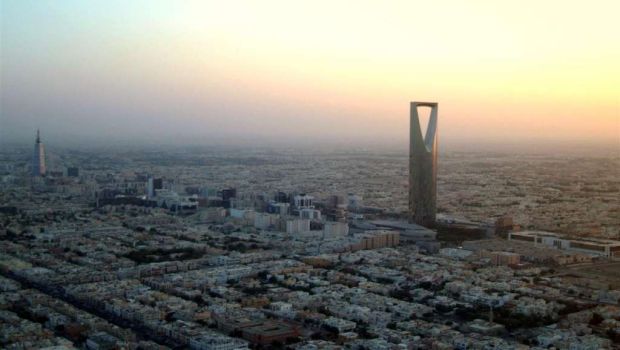The most striking example was the recent announcement by the Saudi government that all agreements and contracts had been finalized for what is billed as the world’s biggest mining project, the 9.6 billion US dollar King Abdullah Waad Al-Shamal City, in the kingdom’s far north.
This is a long-term venture by Maaden, the state-owned mining company, and its partners Bechtel and Fluor to produce 16 million tons per year of phosphate, sulfuric acid, phosphoric acid and other phosphate-based chemicals. Over time, this 170-square-mile (274-square-kilometer) complex is expected to employ 6,300 workers directly and many more in related projects such as a railroad link to the Gulf coast and, according to the official announcement, a 1,000-megawatt electric power plant.
Waad Al-Shamal is exactly the type of development envisioned in the government’s master economic plan, which says that “oil’s share of GDP [gross domestic product] is projected to be a mere 17.9 percent by the end of the planning period” in 2025.
That plan was greeted with considerable skepticism by outside analysts, who said that Saudi Arabia lacked the skilled workforce and management competence to achieve it. Another major obstacle is the nationwide shortage of electricity. The Saudis have undertaken huge industrial and mining projects across the country, but it is not at all clear that the Kingdom will be able to provide the electricity they will need.
It’s not as if the Saudis don’t have the money to build more generating plants. They do. The problem is figuring out what fuel to burn in them. Saudi Arabia is a voracious consumer of electricity, for industry, commercial air conditioning, household use and water desalination. Because its limited natural gas supplies are earmarked for petrochemical development and it has no coal power or hydroelectric dams, Saudi Arabia burns millions of barrels of oil every month to generate electricity. As demand grows, this consumption is cutting into the amount of oil available for export, still by far the biggest piece of the Kingdom’s economy. One recent survey found that per capita oil consumption in Saudi Arabia was 48 barrels a year. In the United States, the figure is nine barrels; in Japan it is six.
Saudi Arabia is planning to follow its neighbor, Abu Dhabi, and turn to nuclear energy, with as many as 16 such plants envisioned—but those are many years in the future. It is not at all clear what fuel will be used in the meantime. The power plant to be built at the new mining city is projected to run on natural gas, on the assumption that enough gas will be found in that region to cover the demand. Perhaps it will, and perhaps the Kingdom’s efforts to upgrade its labor force to meet the demands of the global marketplace will produce results. On paper at least, the Kingdom has well-developed plans for doing what it takes to develop a modern, industrialized country.
Saudi Arabia is already a member of the Group of 20 advanced economic nations, and its growth is not slowing down. Just in the past few weeks, the US cellphone-based car service Uber announced its arrival in Riyadh, a privately owned airline ordered four jetliners, and Bloomberg News reported that major US banks were competing to manage a multi-billion-dollar initial share offering in National Commercial Bank.
Even John Sfakianakis, an economic analyst who has spent many years in the Kingdom and who has long been the skeptic-in-chief about the industrialization plans, noted recently that “over the past few years, key macroeconomic indicators point to remarkable breakthroughs by the Saudi Arabian economy.” He wrote that in the face of worldwide recession, “the Kingdom’s economy maintained high GDP growth rates, a budget surplus [and] growth in the Kingdom’s current account, all while the ratio of public debt-to-GDP remained minimal. Saudi Arabia’s inflation rate remained low amidst a large influx of direct foreign investments. This aggregate data comes as a result of massive oil revenue and large government investment.”
Clearly not a Keynesian, Sfakianakis wrote disapprovingly of the high percentage of capital investment coming from the Saudi government rather than the private sector. In the past decade, he noted, government investment in all sectors other than oil had grown by 652 percent and private investment by 89 percent. But that’s seeing the glass half empty. The other way to look at it is that the government, flush with oil money, is pouring it into economic development—airports, mines, roads, ports, railroads—and thus stimulating a strong surge of private investment.
The real issue is not where the money is coming from, but whether the development and mega-projects such as the phosphate mine benefit ordinary citizens. Credit Suisse’s annual Emerging Markets Consumer Survey, issued in February, reported that only 18 percent of Saudis expected to see improvement in their personal finances this year, the second-lowest among a group of nine countries, and that Saudis generally believed life was getting better only for those already among the top half of earners. Mega-projects may bring long-term benefits, but in the meantime housing is scarce and expensive, urban public transit is almost nonexistent, and the quality of education and health care is wildly uneven.
All views expressed in this blog post are those of the author and do not necessarily represent the views of, and should not be attributed to, The Majalla magazine or Asharq Al-Awsat.

